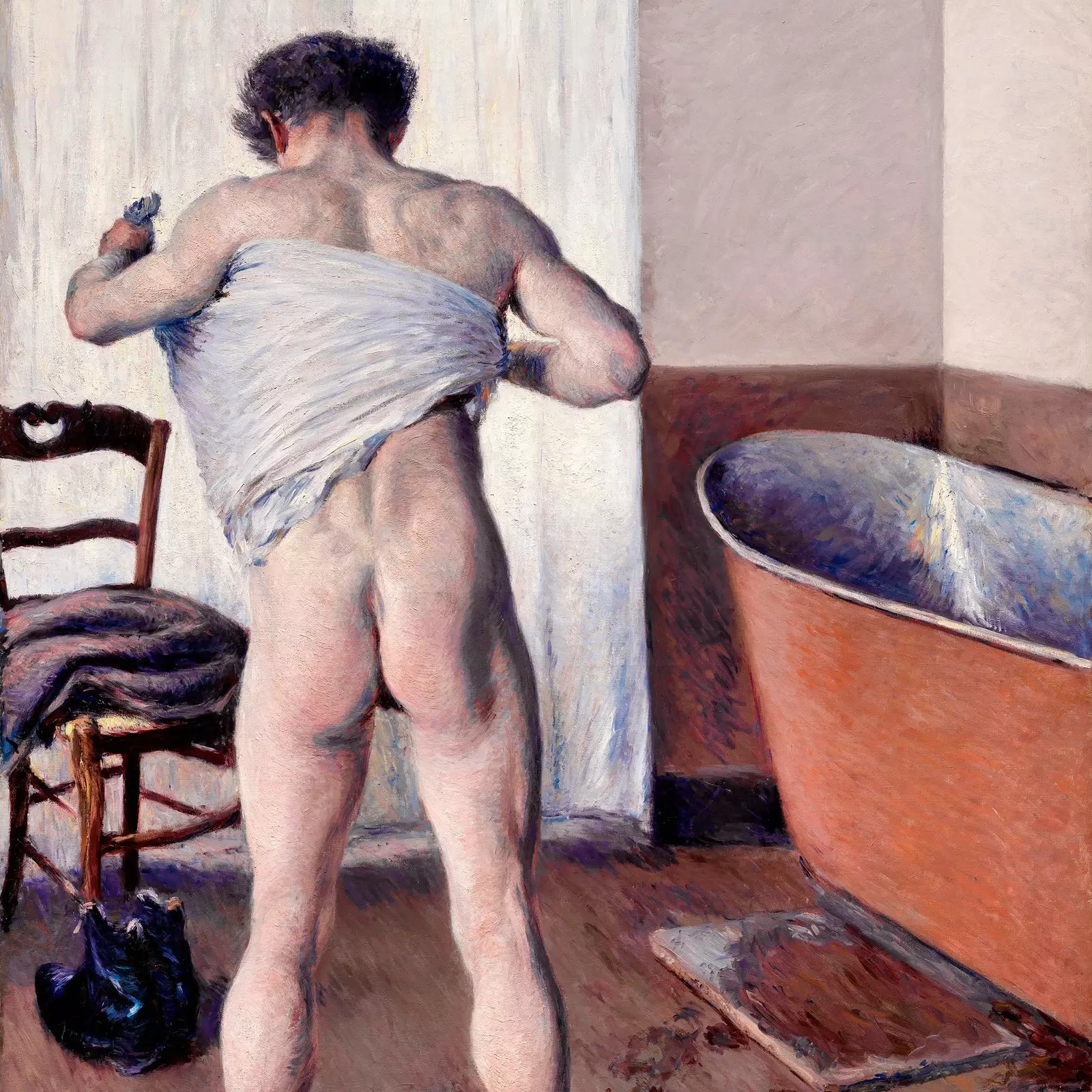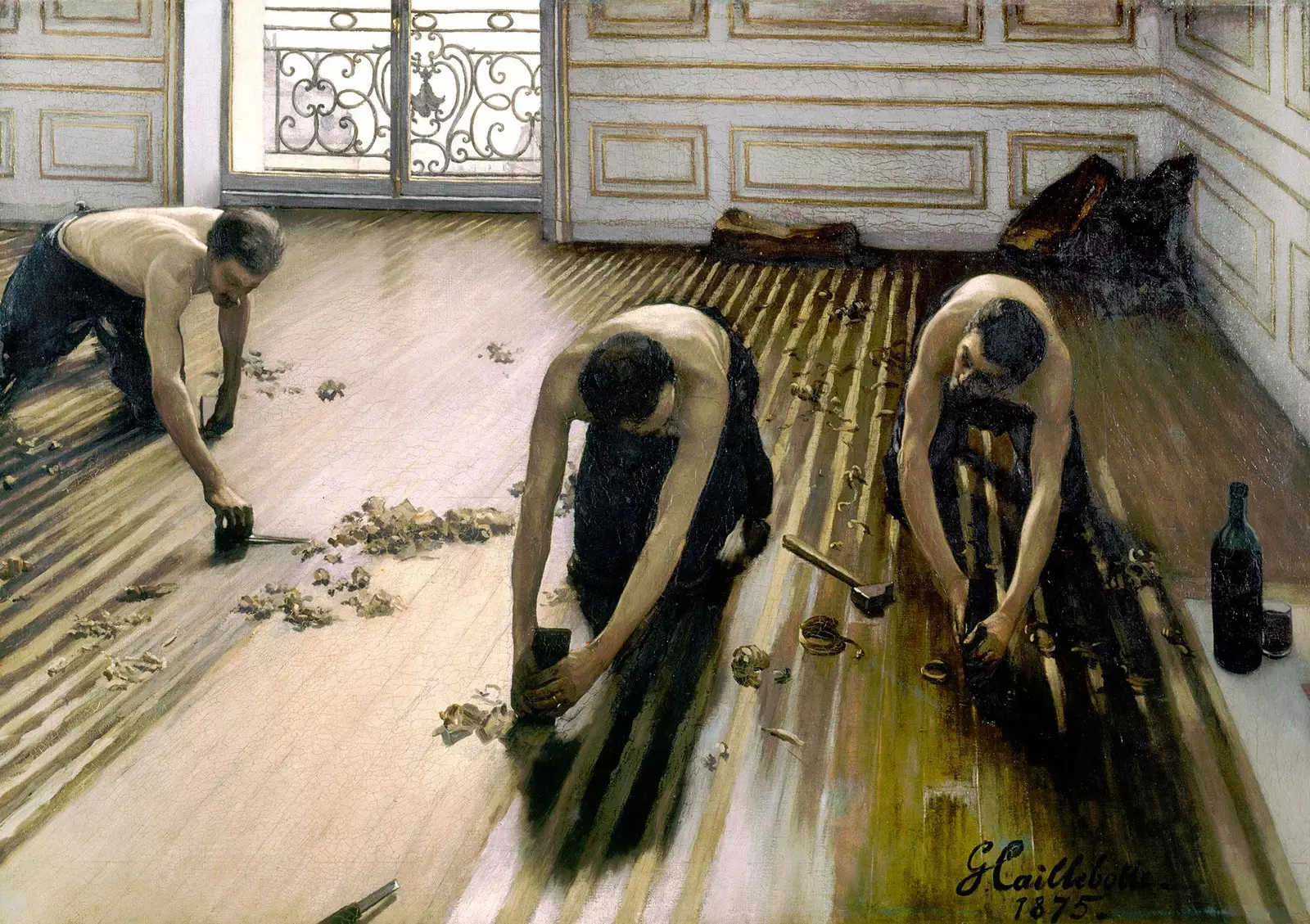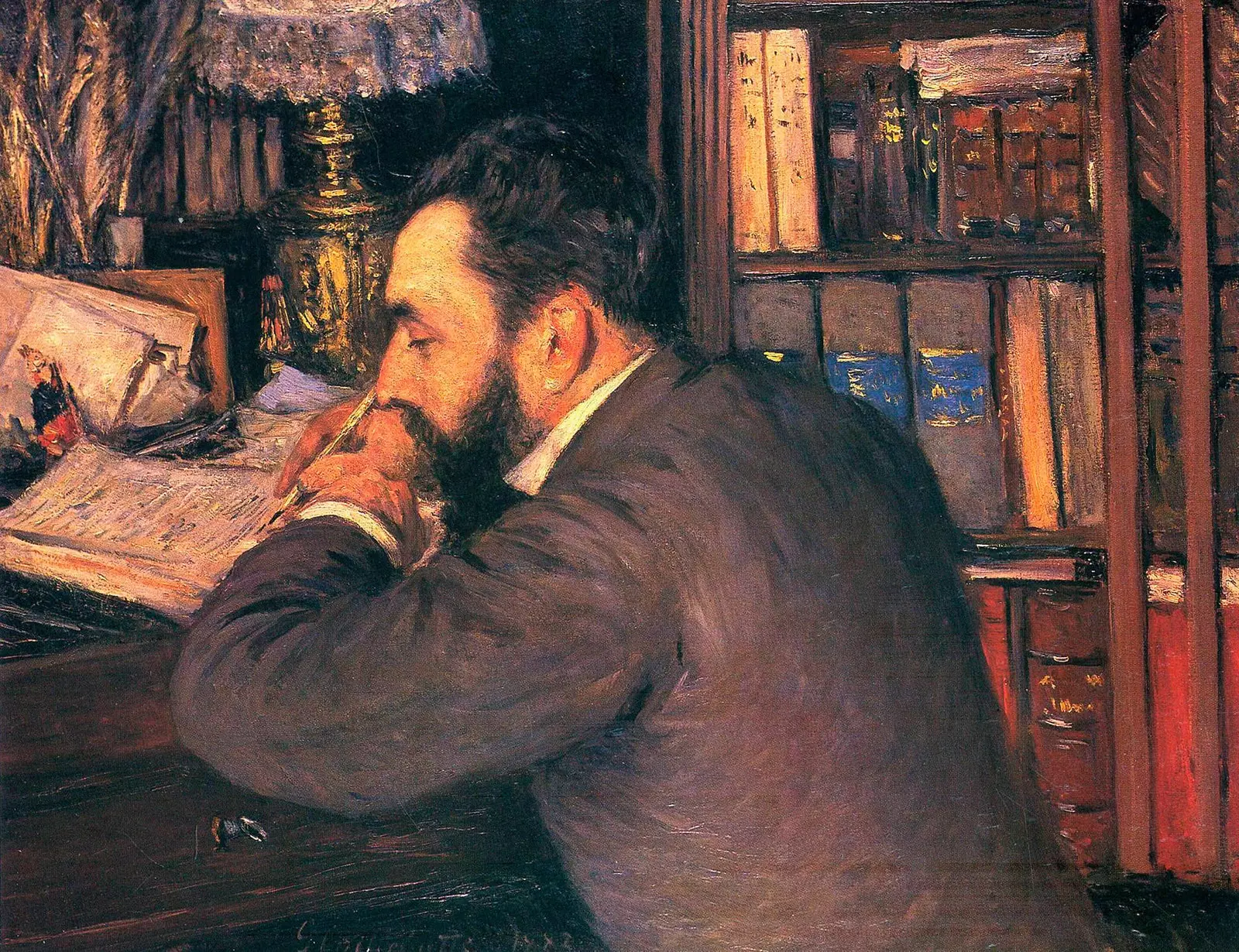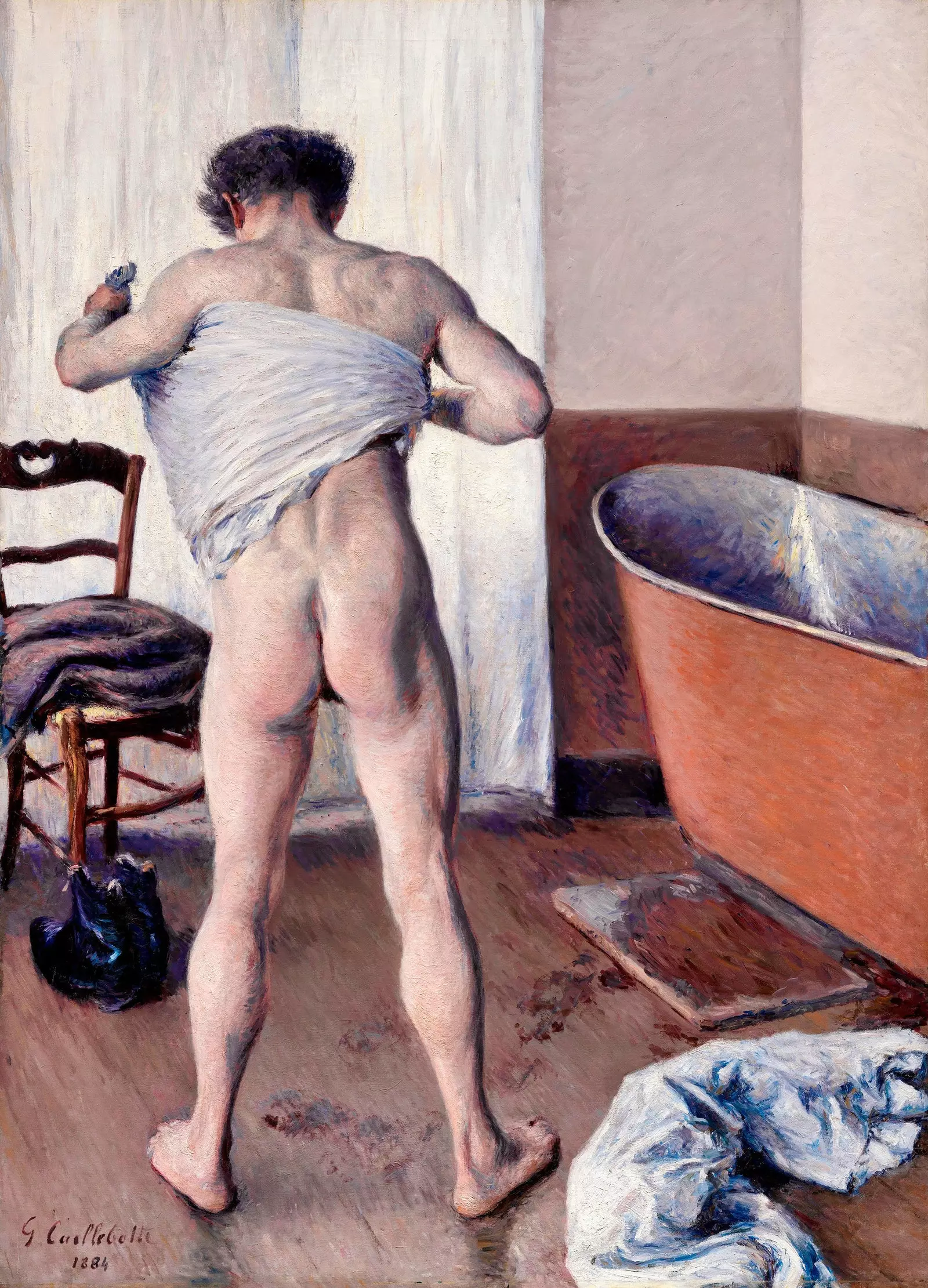
Trip to a painting: 'Man in the bathroom', by Gustave Caillebotte
Gustave Caillebotte he didn't have to sell a single painting to make a living, and precisely for that he allowed himself to always paint what he wanted . A different matter is that most of the time what he wanted were the polished bourgeois interiors, the languid walks in the rain in the city, the glimpses from the balustrade and the balcony. But after all, if that was what his life consisted of, ** why would he paint anything else? **
He was well positioned Caillebotte . At only 26 years old, and when he had just painted his most famous work, 'The Parquet Slashers' , he inherited from his father a fabulous fortune. With her he moved to a building in the Boulevard Haussmann , where he would live accompanied by his exquisite art collection . He did not hesitate to use his many resources to support his artist friends – Monet paid the rent -, those who today appear a few squares ahead of him in that fast-paced game of the goose that is the history of art.
We all know that nothing likes more than seeing a topic fulfilled, and of all topics that of the artist shivering while sipping stale bread soup in a Montmartre attic It is one of the most appreciated. That is why Caillebotte has been branded little less than cowardly impressionist . And it is possible that he missed Pissarro's intellectual complexity , wave Degas' powers of observation , and that he did not invent a new way of painting as he directly did Monet (a Renoir we prefer or put a lot in this garlic). But none of those aces of the brush, and there we will include even the Manet from 'Olympia' , dared to do something as transgressive and as radical as this 'Homme au bain' that challenged the very idea that there was then of what a man was.

'The Parquet Slashers' by Gustave Caillebotte
Caillebotte must have known what he had in his hands . In fact, he painted the picture in 1884 (along with a plugin called 'Man drying his leg' ), but he took up to four years to show it to the public , and he did it outside of France, at the Salon des XX in Brussels. Which was -or was supposed to be- the pinnacle of modernity, despite which they decided to remove the piece from the rooms intended for common visitors so that only experts could admire it. But more than admiration what he aroused was hostility.
Since when could he be framed and hang with impunity a naked man washing himself at home ? How had Caillebotte dared to paint this? Even more than the nude itself, it was the sense of intimacy that he made it so provocative . That intimacy that the viewer's eye can turn into something else as he looks at those worn leather boots next to the chair , in that towel carelessly thrown on the floor , in these wet footprints that lead from the bathtub to the anonymous man vigorously rubbing his muscles . That intimacy that objectifies the male body and therefore, by the standards of the nineteenth century, I feminized it. And there is the mother of the lamb.
At the time, a painting in which it appeared a person caught without clothes in an interior , before, during or after the bath, was something perfectly acceptable , and even much applauded, provided that person was a woman . And besides, she was young and pretty, because you had to please the look. But a man with a full beard, that's right. ¡An object man in the domestic environment ! We begin by allowing this to happen, and we will end up seeing men in corsets and petticoats in our living rooms.

Portrait of Gustave Caillebotte by Henri Cordier
For the rest, the male nude had not been rare since the Renaissance, under the alibis of mythology and the Old Testament. Or from the classic story: 85 years before Caillebotte made these strokes, Jacques-Louis David had conceived a 'Kidnapping of the Sabine Women' in the foreground of which appeared the most illustrious male butt in French painting up to that time, belonging to Romulus , the no less illustrious founder of Rome. In honor of the truth, it must be said that in 1868 Frederic Bazille he had also had the courage to paint a man exhibiting buttocks ( 'The fisherman with a net' ) but that's how it went: the painting was rejected at the Paris Salon "due to indecency" and he had to eat it with potatoes. and the american Thomas Eakins dared with a group of naked bathers in a bucolic setting with 'The swimming hole' , but those open-air baths were then a public and socially accepted practice , so the offense was not such. Come on, move on, there's nothing to look at.
Little is known about Caillebotte's affections and personal life. She did not marry or father children ; Instead, it seems that she had a mistress to whom he bequeathed a generous pension . It is also not known what interest he could have in challenging the notions of gender that prevailed in his time. But I would have some interest, because an ass is an ass , here and on Boulevard Haussmann.
Gustave Caillebotte's 'Man in the Bath' (1884) is in the Museum of Fine Arts in Boston.

Trip to a painting: 'Man in the bathroom', by Gustave Caillebotte
